Last updated: November 12, 2021
Article
The New Frontier: National Parks of the Kennedy Era
"National parks and reserves are an integral aspect of intelligent use of natural resources. It is the course of wisdom to set aside an ample portion of our natural resources as national parks and reserves, thus ensuring that future generations may know the majesty of the earth as we know it today." - John F. Kennedy
President John F. Kennedy recognized the importance of safeguarding natural and cultural landscapes. He believed that every American had a responsibility to serve the greater good of the nation; that together we leave a legacy for future generations to build upon. President Kennedy left behind a legacy of conservation, signing into legislation sixteen national park units.
Explore those parks here...
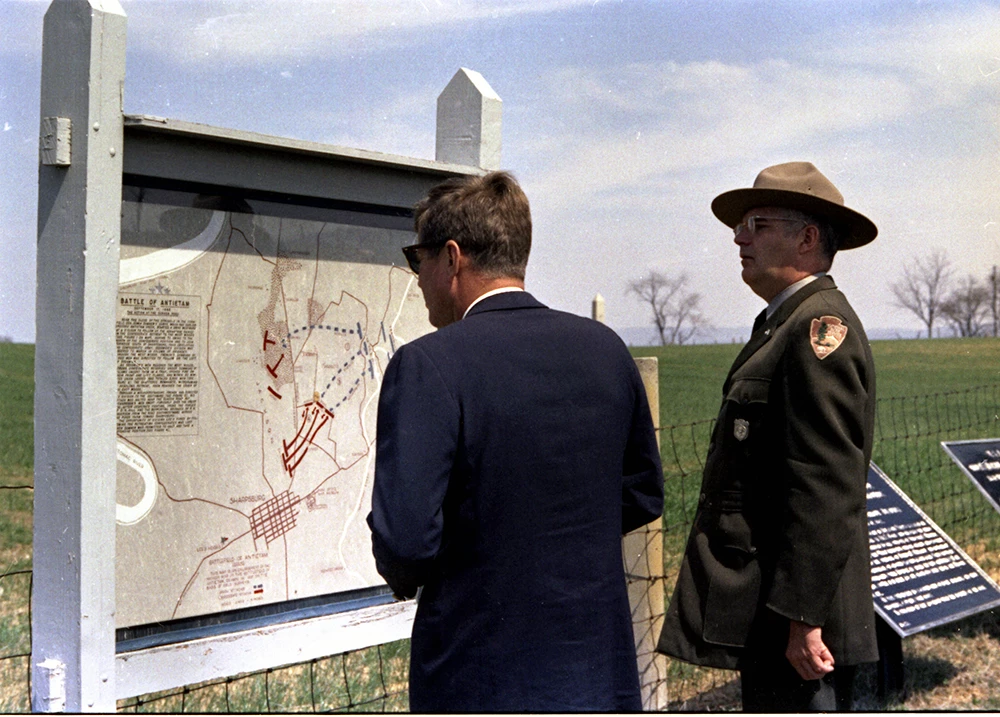
Creator: Robert Knudsen. Courtesy: John F. Kennedy Presidential Library and Museum, Boston, MA. KN-C27846
“...Congressional approval of the Cape Cod National Seashore Area should be regarded as the path-breaker for many other worthy park land proposals pending before the Congress.” -John F. Kennedy
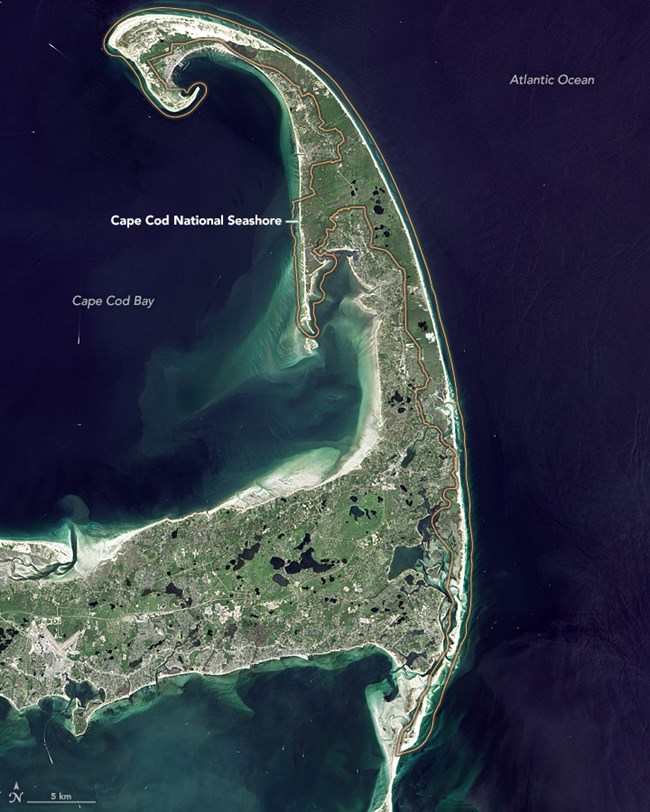
NASA Earth Observatory image by Jesse Allen, using Landsat data from the U.S. Geological Survey. Caption by Michael Carlowicz. Text credit: NASA (Earth Observatory) https://earthobservatory.nasa.gov/images/89171/cape-cod-national-seashore
Cape Cod National Seashore, Wellfleet, Massachusetts
Established: August 7, 1961It was a sense of both looking forward and backward that led Kennedy and the United States government to establish Cape Cod National Seashore. The land would be set aside for all Americans for the sake of recreation, for natural beauty, and for history. But the creation of the park would also set a new precedent.
Unlike most previous national parklands, which were usually carved out of rural public lands in the South and West, the Cape Cod park would be smack in the middle of established East Coast development. It would be the first time the U.S. government created a park out of land that was primarily in private hands. Commercial and residential properties were donated or bought from private owners (sometimes by eminent domain) and from the towns of Provincetown, Truro, Wellfleet, Eastham, Orleans, Chatham until the park spanned 43,607 acres (68.1 square miles or 176.5 square kilometers). Today, Cape Cod National Seashore spans 40 miles of seashore, including six major public beaches, 12 hiking and biking trails, and vast stretches of protected ponds, dune fields, and coastal pine barrens; the local towns also manage many adjacent beaches and green spaces.
Upon signing the bill to create the Seashore in 1961, Kennedy expanded the vision beyond his beloved summer home: “I think we are going to need a good deal more effort like this, particularly in the more highly developed urban areas where so many millions of people now live, and work out a means of securing the advantages of recreation and leisure which these areas can bring.”
"We are tied to the ocean. And when we go back to the sea...we are going back from whence we came." -John F. Kennedy
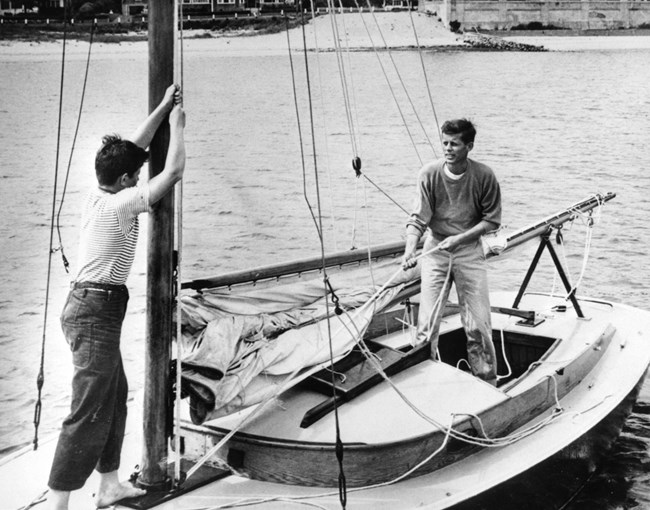
John F. Kennedy Presidential Library and Museum, Boston, MA.
A sizable portion of the early American story began on this outer edge of Massachusetts. In November 1620, the first piece of North America spotted by the passengers and crew of the Mayflower was the spit of glacial sand and rock known as Cape Cod. The Pilgrims had intended to sail farther south, to the Virginia colony, but rough, shallow waters heaved their boat and scared them back to the safety of Provincetown Harbor. There on November 11, 1620, they signed the first self-governing document in American history, the Mayflower Compact.
Over the coming weeks, they made their first contact with Native American people, likely the Nauset tribe. First Encounter Beach in Eastham marks the reported location of a skirmish between the colonists and the tribe. The Pilgrims eventually sailed across Cape Cod Bay and settled in Plymouth.
The entirety of Cape Cod is a piece of geologic history, a reminder of the last Ice Age. Retreating ice sheets dumped rock and sand on the landscape, and rising seas shaped and sculpted the massive sandbar that some scientists believe to be the largest glacial peninsula on Earth. Mixed in with those sands are thousands of years of Native American history from the “people of the first light” (the Wampanoag). You can learn more about the geology of the Cape in our feature: World of Change: Coastline Change.
Cape Cod National Seashore also preserves some more modern pieces of history. Italian inventor and electrical engineer Guglielmo Marconi worked from locations in Wellfleet and Eastham to test his new wireless communications technology—what we now call radio. In 1901, he built four large, wood-framed antennas on an elevated sand dune bluff near what is now called Marconi Beach. In January 1903, he sent the first complete message in morse code across the Atlantic Ocean, transmitting a 300-letter greeting from President Teddy Roosevelt to King Edward VII of England.
Also preserved within the national seashore are several forms of historic architecture. Of course there are many lighthouses, including Highland Light, which was commissioned by George Washington. But there are also more than 50 houses and structures built in the “Modernist” style, which merges minimal, unadorned design with the contours and colors of the landscape. Truro and Provincetown are also home to dozens of spartan dune shacks that became quite popular with 20th century artists and writers such as Eugene O’Neill, Jack Kerouac, e. e. cummings, Norman Mailer, and Jackson Pollock.
~The above information was written by, and is credited to, staff at NASA. Cape Cod National Seashore (nasa.gov)
"It's only when [we] join together in a forward movement that this country moves ahead and that we prepare the way for those who come after us." -John F. Kennedy
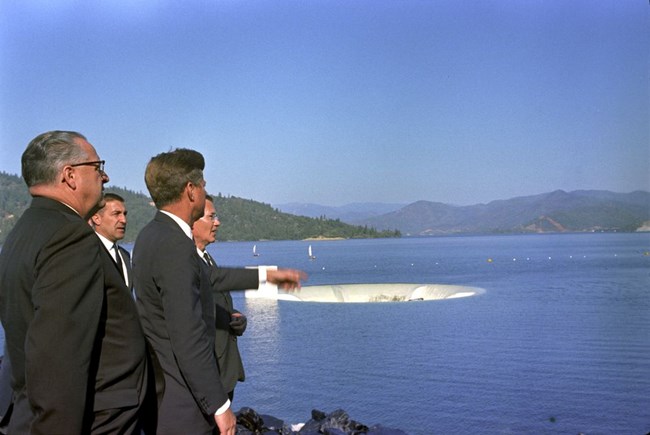
Cecil Stoughton. White House Photographs. John F. Kennedy Presidential Library and Museum, Boston, MA. ST-C310-5-63
Whiskeytown National Recreation Area, Whiskeytown, California
Established: May 31, 1962
John F. Kennedy signed the legislation for Whiskeytown National Recreation Area in 1962. It was later incorporated into the Whiskeytown- Shasta-Trinity National Recreation Area, which is co-administered by the National Park Service and the U.S. Forest Service.
The archeology and history of what is now Whiskeytown National Recreation Area goes back thousands of years.
For Millenia, the Wintu and their ancestors lived in general harmony with the area’s land and water. Their living in what is now the national recreation area was altered substantially during the California Gold Rush, as European Americans decimated California’s American Indian peoples through direct and indirect actions (read the story of Kate Camden and Indian Slavery). Nevertheless, the Wintu exist in northern California to this day, a testament to perseverance against all odds.
When word got out about gold deposits along Clear Creek, European Americans, Chinese, and immigrants from other parts of the world poured into Northern California with hopes and dreams of striking it rich. Communities with the names of Whiskeytown, Oak Bottom, and Tower House sprang to life, and pioneer-settlers included Charles Camden, Philena Camden and Levi Tower. You can learn about the Camdens and more at the Tower House Historic District.
As the 1800s moved into the 1900s, water became the new gold. Visions involved storing and transferring northern California’s abundant rain and snow runoff to the drier farm fields of the San Joaquin Valley. The Trinity River Division of the Central Valley Project was an engineering milestone involving the construction of a series of dams, reservoirs, tunnels, and hydroelectric powerplants. Whiskeytown Lake, Clair A. Hill Whiskeytown Dam, and Judge Francis Carr Powerhouse, all located within Whiskeytown National Recreation Area, were part of this Bureau of Reclamation project.
On a conservation and political tour of western states, U.S. President John Fitzgerald Kennedy dedicated Whiskeytown Dam on September 28, 1963. This was Kennedy’s final visit to California; he was assassinated less than two months later. To honor the slain president, Redding locals funded and dedicated the Kennedy Memorial.
Congress passed and then President Lyndon Baines Johnson signed legislation establishing Whiskeytown-Shasta-Trinity National Recreation Area on November 8th, 1965. In the next few years, land was acquired for Whiskeytown and visitor infrastructure was further developed. While the Shasta Lake and Trinity Lake units of the national recreation area are administered by the U.S. Forest Service, the Whiskeytown unit is managed by the National Park Service.
~The above information was written by, and is credited to, staff at Whiskeytown NRA. Whiskeytown National Recreation Area (U.S. National Park Service) (nps.gov)
"Thus it is our task in our time and in our generation to hand down undiminished to those who come after us, as was handed down to us by those who came before, the natural wealth and beauty which is ours." -John F. Kennedy
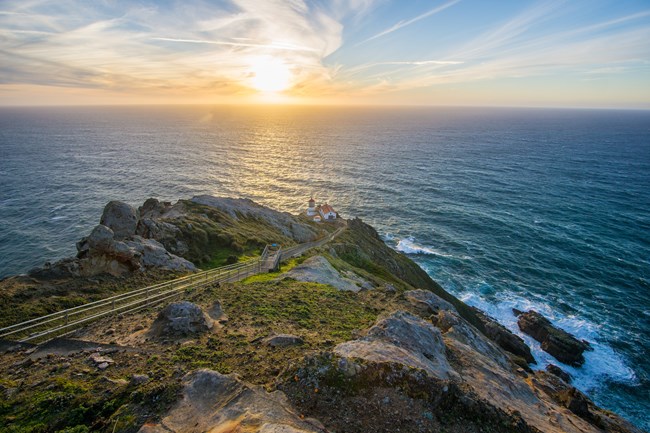
NPS Photo/Anela Ramos Kopshever
Point Reyes National Seashore, Point Reyes Station, California
Established: September 28, 1962Point Reyes National Seashore provides essential habitat for 27 threatened and endangered species and a variety of rare or recovering species including the tule elk, California red-legged frog, Sonoma spineflower, northern elephant seal, coho salmon, and western snowy plover.
The convergence of two ecological provinces and the coastal/marine margin at Point Reyes creates a rich biological diversity and abundance of plants and animals seen few places on earth.
The peninsula's rich and varied natural resources -- its estuaries, coastal grasslands, salt marshes, coniferous forests, and marine environment -- have attracted and supported people for over 5000 years and reflect a continuum of human use and changing land-use values.
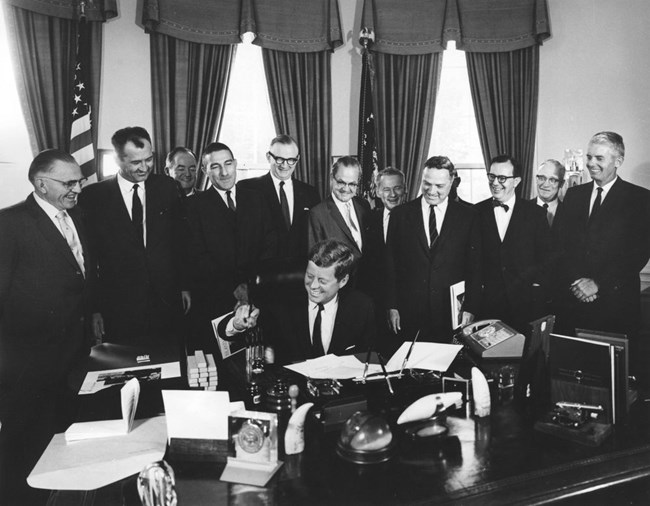
Abbie Rowe. White House Photographs. John F. Kennedy Presidential Library and Museum, Boston, MA. AR7456-F
Point Reyes National Seashore is a 70,000-acre recreational and inspirational haven consisting of 80 miles of wild, undeveloped coastline located just an hour's drive from an urban area [San Francisco] populated by over seven million people.
The diversity and complexity of the natural and cultural resources found in and around Point Reyes National Seashore make it a world-class laboratory and outdoor classroom providing outstanding opportunities for hands-on education and long-term scientific research.
Point Reyes National Seashore is one of the finest examples of how plate tectonics and other geologic processes continue to define our landscapes and our lives.
The coastal weather and the Point Reyes Peninsula create such a hazard for area mariners that the Point Reyes Lighthouse, with its first-order Fresnel lens, and a Coast Guard lifesaving station were built here.
The natural and cultural resources of the Point Reyes Peninsula and the surrounding area are so rare, valuable, and inspirational to all the people of the world that the United Nations declared the Seashore an International Biosphere Reserve, known as the Central California Coast Biosphere Reserve.
~The above information was written by, and is credited to, staff at Point Reyes NS. Point Reyes National Seashore (U.S. National Park Service) (nps.gov)
"I am certain that after the dust of centuries has passed over cities, we too will be remembered not for victories or defeats in battle or politics but for our contributions to the human spirit." -John F. Kennedy
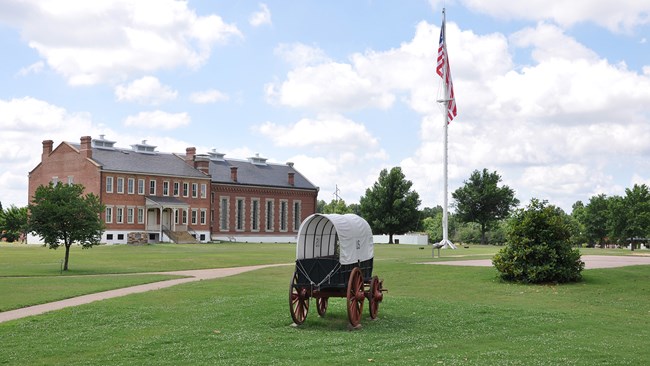
NPS
Fort Smith National Historic Site, Fort Smith, Arkansas
Established: September 13, 1961
The Fort Smith National Historic Site is historically and archeologically complex. The park contains a multicomponent prehistoric site and two historic military forts. The second fort also served as a jail and courthouse for the United States District Court for the Western District of Arkansas. Federal use of the site spanned some 79 years, a length of time that, for conceptual purposes, is commonly divided into three periods: First Fort (1827-1824), Second Fort (1838-1871), and Judicial (1878-1896). Adding to these time periods, the history of the Fort Smith National Historic Site and Arkansas River Valley areas spans as far as 12,000 years ago to include the prehistoric cultural history.
During the 1958–1963 archeological investigations at the site of the first Fort Smith, evidence of a substantial prehistoric occupation was brought to light. Beyond a brief description and interpretation of recovered remains, the prehistoric occupation of the Fort Smith site has never been investigated or formally recorded. The underlying prehistoric site is not listed in the files of the Arkansas Archeological Survey. Collections generated from this site reflect a probable extensive multicomponent occupation—at least within the circumscribed area of the first fort. The prehistoric occupations indicated by diagnostic artifacts in the park collection are Early to Late Archaic and Woodland to Mississippian.
Research into the prehistory of the Arkansas River Valley began in the nineteenth century, although most studies concentrated on sites south of Little Rock. Initial archeological investigation of the river valley upstream from Little Rock in the first quarter of the twntieth century focused on the Spiro site near Fort Smith and other sites in the Oklahoma area of the Arkansas River. It ws not until Moorehead's survey of the entire length of the Arkansas River Valley that the variety and richness of the archeological record along the river was recognized. It was also during this period that commercial looting of mounds and cemeteries stimulated archeologists in Arkansas and Oklahoma to develop research programs to investigate these important sites.
Work by Samual Dellinger of the University of Arkansas Museum and Kenneth G. Orr of the University of Oklahoma resulted in the acquisition of data that have served as the basis for identifying regional prehistoric development in the Arkansas River Valley.The cultural sequence of the Arkansas River Valley spans a wide range of time, extending from the earliest known prehistoric time period, the Paleoindian period (ca. 12,000-10,500 BP), up to the time of Euroamerican settlement in the early nineteenth century. The prehistory of the region is described in a number of reports. Most recently, the Arkansas Archeological Survey has completed a synthesis of the archeological literature for the entire region.The cultural sequence can be divided into two broad occupational eras, prehisotic and historic. The prehistoric occupation, in turn, can be divided into five periods: Paleoindian, Dalton, Archaic, Woodland, and Mississippian.
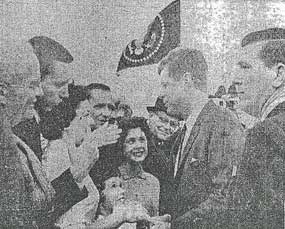
UPI Telephoto from Southwest American, October 30, 1961
Fort Smith was designated as a unit of the National Park Service on September 13, 1961 by President Kennedy. The next month, JFK passed through Fort Smith and while at the airport received the property deed from Fort Smith's Mayor Bob Brooksher. Upon receiving the deed, President Kennedy said, "I don't know exactly what part of Fort Smith this entitles me to, but I'm sure it's a good part."
A group of local citizens had worked many years to have Belle Point, the site of the first Fort Smith, and the federal courtroom of Judge Parker recognized as a National Historic Site. In the 1950s Public Historical Restoration, Inc. had restored the courtroom, rebuilt the gallows and conducted archeological excavations at Belle Point.
In 1963 a ceremony was held at Judge Parker's historic courtroom, transferring it from Public Historical Restorations, Inc. to the National Park Service. The next year, the Fort Smith National Historic Site was officially dedicated by Lady Bird Johnson.
~The above information was written by, and is credited to, staff at Fort Smith NHS. Fort Smith National Historic Site (U.S. National Park Service) (nps.gov)

NPS
Russell Cave National Monument, Bridgeport, Alabama
Established: May 11, 1961Russell Cave National Monument was established on May 11, 1961 by President John F. Kennedy. The park serves to protect one of the most complete records of human occupation in the Southeast US. Through elaborate excavations in the 1950s and 60s, archeologists were able to date the time people lived here from about 10,000 BCE to 1650 CE. This vast time period makes Russell Cave a unique spot to learn about not only the history of the Southeast, but also how archeology can teach us about the past.
~The above information was written by, and is credited to, staff at Russell Cave NM. Russell Cave National Monument (U.S. National Park Service) (nps.gov)
"Fellow-citizens, we cannot escape history…No personal significance, or insignificance, can spare one or another of us. The fiery trial through which we pass, will light us down, in honor or dishonor, to the latest generation."
-Abraham Lincoln
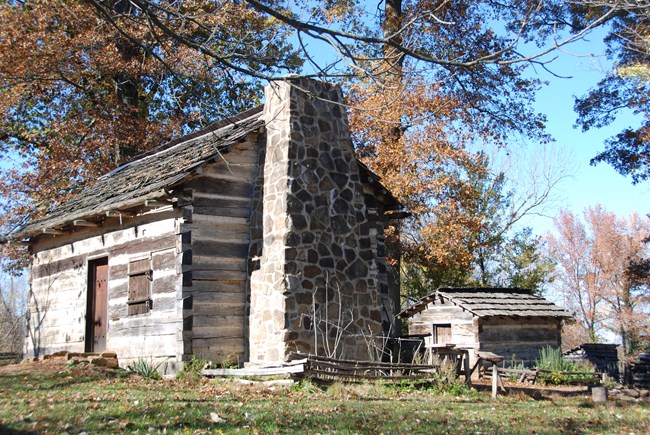
NPS/Paula Alexander
Lincoln Boyhood National Memorial, Lincoln City, Indiana
Established: February 19, 1962:Abraham Lincoln and his family moved from Kentucky to Indiana in 1816 and stayed until 1830 when they moved to Illinois. During this period, Lincoln grew physically and intellectually into a man. The people he knew here and the things he experienced had a profound influence on his life. His sense of honesty, his belief in the importance of education and learning, his respect for hard work, his compassion for his fellow man, and his moral convictions about right and wrong were all born of this place and this time. The time he spent here helped shape the man that went on to lead the country. This site is our most direct tie with that time of his life. Lincoln Boyhood preserves the place where he learned to laugh with his father, cried over the death of his mother, read the books that opened his mind, and triumphed over the adversities of life on the frontier.
Learn about the people and places that played such an important part in Abraham Lincoln's growth and development.
~The above information was written by, and is credited to, staff at Lincoln Boyhood National Memorial. Lincoln Boyhood National Memorial (U.S. National Park Service) (nps.gov)
"There is something that happens when we leave the land and enter the ocean. It's unexpected, the environment feels strangely welcoming. The ocean almost feels like... home." -John F. Kennedy
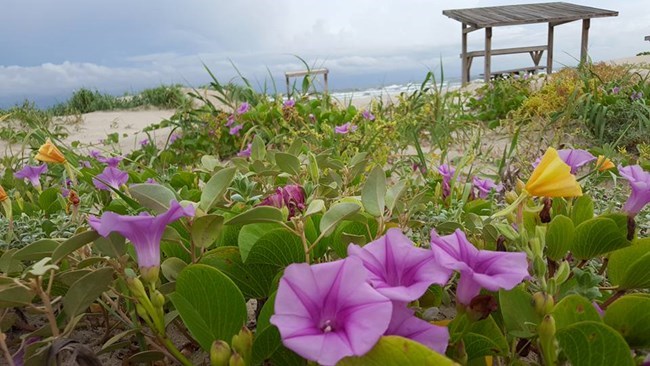
NPS
Padre Island National Seashore, Corpus Christi, Texas
Established: September 28, 1962
For almost its entire existence, Padre Island has remained undeveloped wilderness. Because the National Seashore endeavors to preserve Padre Island in its natural state, visiting the island is very much like stepping back into the past. With few exceptions, visitors can now see Padre Island as it has existed throughout most of its history and how it is described in the few extant descriptions by the early explorers.
Four nations have owned Padre Island at different times. The first was Spain, which owned Padre Island from its entry into the New World until the Mexican Revolution of 1820. Following the revolution, Mexico owned Padre Island from 1821 until 1836, when the newly formed Republic of Texas claimed the area between the Nueces river and the Rio Grande. Padre Island was under ownership by the Republic of Texas until its territory was acquired by the United States, following the War with Mexico of 1845-1848. Throughout these times, the island has been known by several names, with Padre Island being only the most recent. It has also been known as "la Isla Blanca" (White Island) and "Isla de los Malaguitas" (Island of the Malaquites, a band of the Karankawa people.)
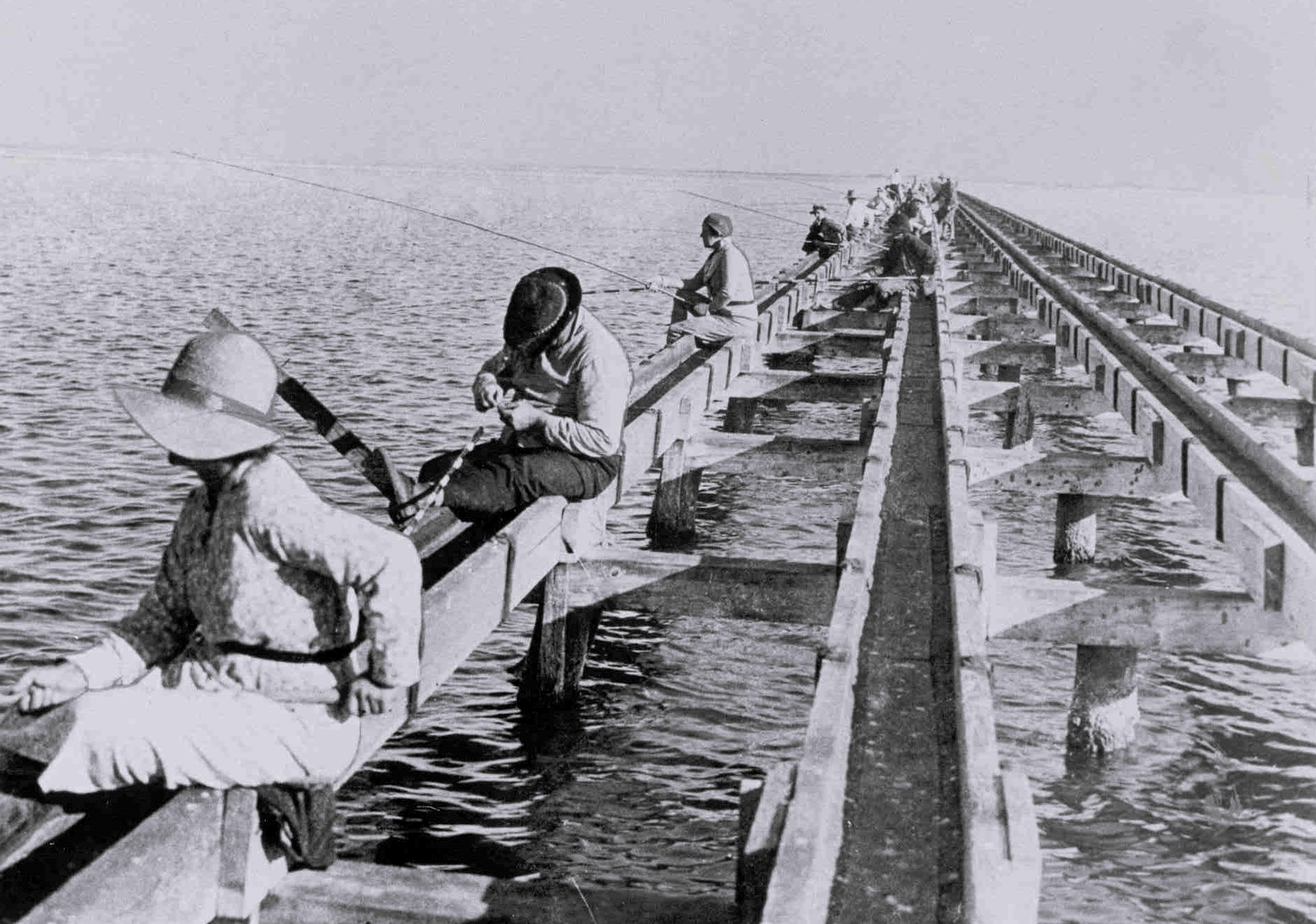
NPS
The first permanent settlement on the island was located on the island's southern tip. This area was established around 1804 by a Spanish priest, Padre Nicolas Balli, after whom the island is named. Prior to then, the only people known to have inhabited or visited the island were nomadic hunter-gatherers Native Americans, Spanish troops or ships, and the survivors of three shipwrecks on the island's shore in 1554.
From 1804 to 1970, [and even] after the National Seashore opened in 1962, the island was used almost solely for ranching. The most prominent and lasting exceptions to this have been the development of the tourism industry (including the development of the town of South Padre Island and the National Seashore) beginning in the early 1920's, and the exploitation of the island's oil and natural gas reserves, which began in the 1950s.
One of the most interesting periods of the island's history was from World War II to 1960, when a Navy bombing range existed on the northern section of the island.
~The above information was written by, and is credited to, staff at Padre Island National Seashore. Padre Island National Seashore (U.S. National Park Service) (nps.gov)
“Here is your country. Cherish these natural wonders, cherish the natural resources, cherish the history and romance as a sacred heritage, for your children and your children's children. Do not let selfish men or greedy interests skin your country of its beauty, its riches, or its romance.” -Theodore Roosevelt
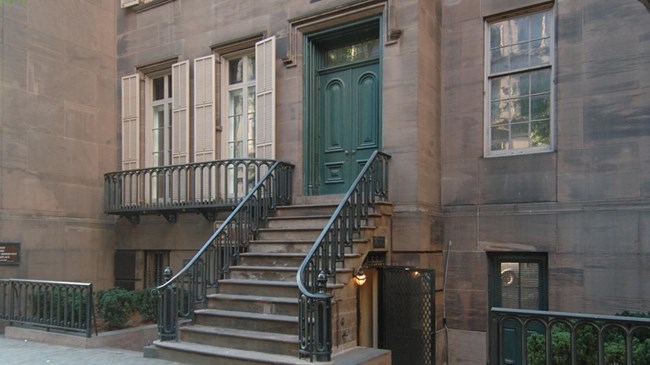
NPS
Theodore Roosevelt Birthplace National Historic Site, New York, New York
Established: July 25, 1962
Theodore Roosevelt, the 26th President of the United States, lived at this site from his birth on October 27, 1858 until he was 13 years old. The reconstructed house contains five period rooms, two museum galleries and a bookstore.
Teedie, as young Roosevelt was nicknamed, was a sickly but bright boy, from a wealthy family. To improve his health, Teedie began an exercise program at the house's outdoor gymnasium that started a lifelong passion for the "strenuous life."
After graduating from Harvard University, Roosevelt pursued his boyhood dreams, as a rancher, naturalist, explorer, author, and Colonel of the Rough Riders. His political service included reforming the U.S. Civil Service Commission and New York City Police Department, and terms as Governor of New York and Vice President of the U.S.
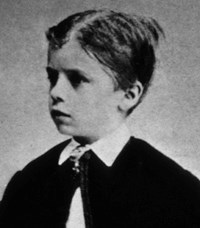
NPS
Theodore Roosevelt became president when William McKinley was assassinated in September 1901. As President, Roosevelt pushed progressive reforms, such as conservation of public lands and trust busting, and negotiated an end to the war between Russia and Japan, for which he won a Nobel Peace Prize.
Roosevelt's original birthplace was demolished in 1916. After Roosevelt's death in 1919, the site was purchased by the Women's Roosevelt Memorial Association, and then reconstructed by Theodate Pope Riddle and decorated with many of its original furnishings by Roosevelt's sisters and wife. Read more about the story of re-creating the birthplace here.
~The above information was written by, and is credited to, staff at Theodore Roosevelt Birthplace National Historic Site. Theodore Roosevelt Birthplace National Historic Site (U.S. National Park Service) (nps.gov)
"The nation behaves well if it treats the natural resources as assets, which it must turn over to the next generation increased, and not impaired in value."
-Theodore Roosevelt
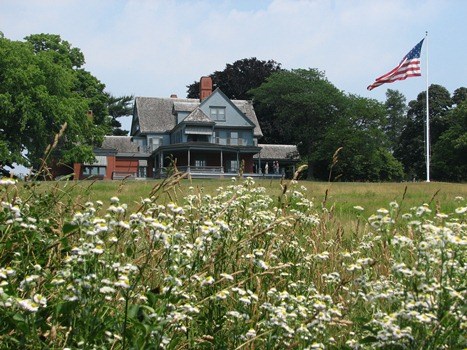
NPS
Sagamore Hill National Historic Site, Oyster Bay, New York
Established: July 25, 1962In 1880, at the age of 22, Theodore Roosevelt purchased 155 arces of land for $30,000 in the Oyster Bay Cove area of Long Island. Four years later, in 1884, he hired the New York City based architectural firm, Lamb and Rich, to plan a large Queen Anne architecture styled home. It was completed in 1885 by John A. Wood and Son for $16,975. Roosevelt named it Sagamore Hill.
In 1886, Theodore Roosevelt moved into Sagamore Hill with his second wife, Edith, and daughter Alice, with his first wife, Alice. Instead of being a summer house, it became their permanent residence and featured a working farm.
Roosevelt believed in the importance of using land for farming so he devoted 47 acres of the Sagamore Hill estate to farmland. In fact, the first building erected on the property, before the house, was the stable and lodge. The original farm manager was Noah Seaman who managed the farm until his death in 1911. Robert Gillespie became the next superintendent and had prior experience working on many New York estates. Unlike Seaman, Gillespie lived with his family in the Roosevelt’s lodge.
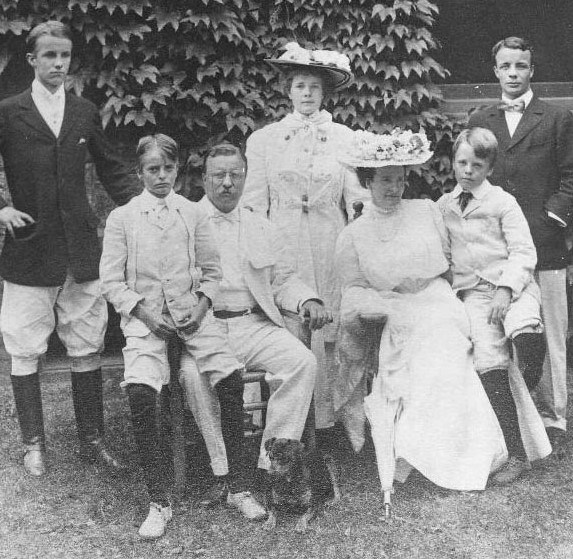
NPS
The Roosevelts hired additional farm workers to cultivate the hay and straw needed to feed the animals. They had a variety of farm animals including cows, chickens, turkeys, and pigs. They also had large fruit and vegetable groves. One worker, Alfred Davis, who had previously worked at TR's father's Oyster Bay estate, Tranquility, was known as Mr. Let-it-Be to the Roosevelt children, and would care for the fruit and vegetables groves located in the garden area east of the house. He would often scold the children for picking the too ripe vegetables and fruits, telling them to “let it be.” Mrs. Roosevelt would also tend to her flower garden located in that same area of the property.
Edith Roosevelt managed much of the estate along with her household responsibilities to allow TR more time for his political duties. However, when she saw Theodore overworked and in need of a break, she would tell him to go and help the farm hands bring in the hay. He loved the physical demands of farm work and if he spent a day helping, he insisted that the farm manager add his name to the time sheets so he could collect his daily wage.
After becoming President of the United States in 1901, TR wished to avoid the heat of Washington, D.C., so during the summer months, he relocated his office to Sagamore Hill. During Roosevelt's time in office, Sagamore Hill was the focus of international attention. Distinguished visitors included Cecil Spring-Rice, and Henry Cabot Lodge as well as members of the Russian and Japanese Delegation. While staying with the Roosevelts, they enjoyed fresh meals from the farms.
Throughout its years, the farm varied in size and production. Also, between 1884 and 1906, TR bought and sold portions of Sagamore Hill land to other Roosevelt relatives including his sister Anna, his Uncle James, Aunt Gracie, and cousin W. Emlen Roosevelt. Years after his death, in 1938, his oldest son Ted Jr. purchased four acres from Edith Roosevelt, and built his home, Old Orchard, in the area that was once the apple orchard.
Theodore Roosevelt lived at Sagamore Hill from 1884 until his death in January, 1919
~The above information was written by, and is credited to, staff at Sagamore Hill National Historic Site. Sagamore Hill National Historic Site (U.S. National Park Service) (nps.gov)
"In thinking of America, I sometimes find myself admiring her bright blue sky — her grand old woods — her fertile fields — her beautiful rivers —her mighty lakes, and star-crowned mountains." -Frederick Douglass

NPS
Frederick Douglass National Historic Site, Washington, DC
Established: September 5, 1962
The Frederick Douglass National Historic Site preserves and interprets Cedar Hill, where Frederick Douglass lived from 1877 until his death in 1895. The centerpiece of the site is the historic house, which sits on top of a 50-foot hill and eight acres of the original estate. Restored to its 1895 appearance, the house is furnished with original objects that belonged to Frederick Douglass and other household members.
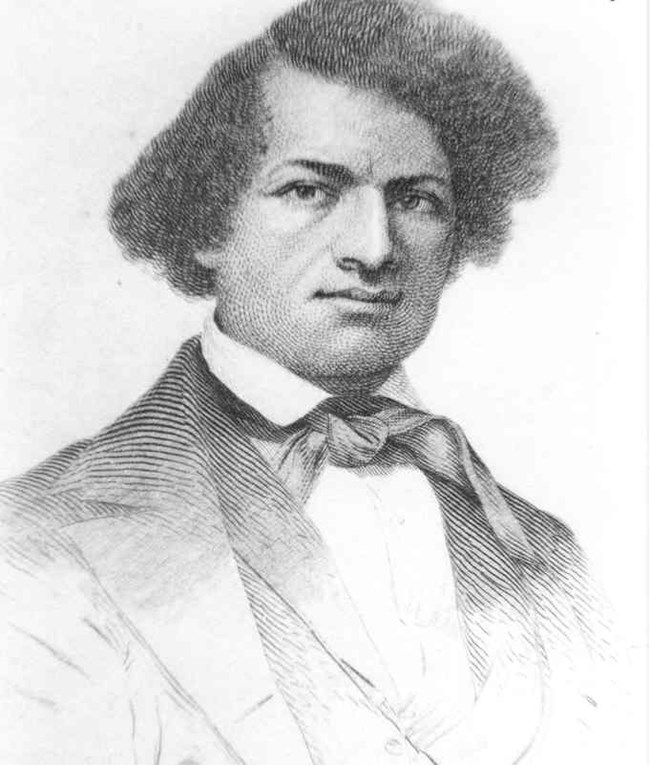
Public Domain
Frederick Augustus Washington Bailey was born into slavery on the Eastern Shore of Maryland in February 1818. He had a difficult family life. He barely knew his mother, who lived on a different plantation and died when he was a young child. He never discovered the identity of his father. When he turned eight years old, his slaveowner hired him out to work as a body servant in Baltimore.
At an early age, Frederick realized there was a connection between literacy and freedom. Not allowed to attend school, he taught himself to read and write in the streets of Baltimore. At twelve, he bought a book called The Columbian Orator. It was a collection of revolutionary speeches, debates, and writings on natural rights.
When Frederick was fifteen, his slaveowner sent him back to the Eastern Shore to labor as a fieldhand. Frederick rebelled intensely. He educated other slaves, physically fought back against a "slave-breaker," and plotted an unsuccessful escape.
Frustrated, his slaveowner returned him to Baltimore. This time, Frederick met a young free black woman named Anna Murray, who agreed to help him escape. On September 3, 1838, he disguised himself as a sailor and boarded a northbound train, using money from Anna to pay for his ticket. In less than 24 hours, Frederick arrived in New York City and declared himself free. He had successfully escaped from slavery.
The Abolitionist Movement
After escaping from slavery, Frederick married Anna. They decided that New York City was not a safe place for Frederick to remain as a fugitive, so they settled in New Bedford, Massachusetts. There, they adopted the last name "Douglass" and they started their family, which would eventually grow to include five children: Rosetta, Lewis, Frederick, Charles, and Annie.
After finding employment as a laborer, Douglass began to attend abolitionist meetings and speak about his experiences in slavery. He soon gained a reputation as an orator, landing a job as an agent for the Massachusetts Anti-Slavery Society. The job took him on speaking tours across the North and Midwest.
Douglass's fame as an orator increased as he traveled. Still, some of his audiences suspected he was not truly a fugitive slave. In 1845, he published his first autobiography, Narrative of the Life of Frederick Douglass, to lay those doubts to rest. The narrative gave a clear record of names and places from his enslavement.
To avoid being captured and re-enslaved, Douglass traveled overseas. For almost two years, he gave speeches and sold copies of his narrative in England, Ireland, and Scotland. When abolitionists offered to purchase his freedom, Douglass accepted and returned home to the United States legally free. He relocated Anna and their children to Rochester, New York.
In Rochester, Douglass took his work in new directions. He embraced the women's rights movement, helped people on the Underground Railroad, and supported anti-slavery political parties. Once an ally of William Lloyd Garrison and his followers, Douglass started to work more closely with Gerrit Smith and John Brown. He bought a printing press and ran his own newspaper, The North Star. In 1855, he published his second autobiography, My Bondage and My Freedom, which expanded on his first autobiography and challenged racial segregation in the North.
Civil War and Reconstruction
In 1861, the nation erupted into civil war over the issue of slavery. Frederick Douglass worked tirelessly to make sure that emancipation would be one of the war's outcomes. He recruited African-American men to fight in the U.S. Army, including two of his own sons, who served in the famous 54th Massachusetts Volunteer Infantry. When black troops protested they were not receiving pay and treatment equal to that of white troops, Douglass met with President Abraham Lincoln to advocate on their behalf.
As the Civil War progressed and emancipation seemed imminent, Douglass intensified the fight for equal citizenship. He argued that freedom would be empty if former slaves were not guaranteed the rights and protections of American citizens. A series of postwar amendments sought to make some of these tremendous changes. The 13th Amendment (ratified in 1865) abolished slavery, the 14th Amendment (ratified in 1868) granted national birthright citizenship, and the 15th Amendment (ratified in 1870) stated nobody could be denied voting rights on the basis of race, skin color, or previous servitude.
In 1872, the Douglasses moved to Washington, D.C. There were multiple reasons for their move: Douglass had been traveling frequently to the area ever since the Civil War, all three of their sons already lived in the federal district, and the old family home in Rochester had burned. A widely known public figure by the time of Reconstruction, Douglass started to hold prestigious offices, including assistant secretary of the Santo Domingo Commission, legislative council member of the D.C. Territorial Government, board member of Howard University, and president of the Freedman's Bank.
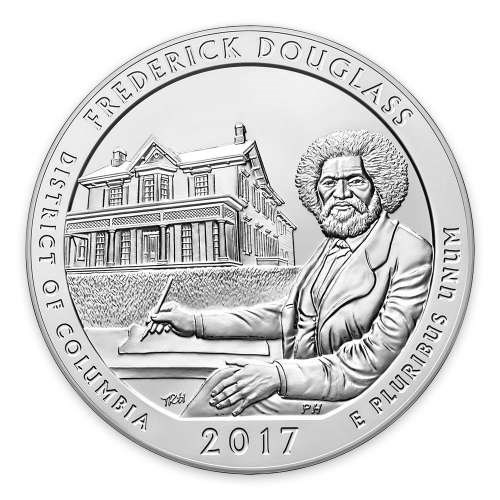
U.S. Mint
Post-Reconstruction and Death
After the fall of Reconstruction, Frederick Douglass managed to retain high-ranking federal appointments. He served under five presidents as U.S. Marshal for D.C. (1877-1881), Recorder of Deeds for D.C. (1881-1886), and Minister Resident and Consul General to Haiti (1889-1891). Significantly, he held these positions at a time when violence and fraud severely restricted African-American political activism.
On top of his federal work, Douglass kept a vigorous speaking tour schedule. His speeches continued to agitate for racial equality and women's rights. In 1881, Douglass published his third autobiography, Life and Times of Frederick Douglass, which took a long view of his life's work, the nation's progress, and the work left to do. Although the nation had made great strides during Reconstruction, there was still injustice and a basic lack of freedom for many Americans.
Tragedy struck Douglass's life in 1882 when Anna died from a stroke. He remarried in 1884 to Helen Pitts, an activist and the daughter of former abolitionists. The marriage stirred controversy, as Helen was white and twenty years younger than him. Part of their married life was spent abroad. They traveled to Europe and Africa in 1886-1887, and they took up temporary residence in Haiti during Douglass's service there in 1889-1891.
On February 20, 1895, Douglass attended a meeting for the National Council of Women. He returned home to Cedar Hill in the late afternoon and was preparing to give a speech at a local church when he suffered a heart attack and passed away. Douglass was 77. He had remained a central figure in the fight for equality and justice for his entire life.
~The above information was written by, and is credited to, staff at Frederick Douglass National Historic Site. Frederick Douglass National Historic Site (U.S. National Park Service) (nps.gov)
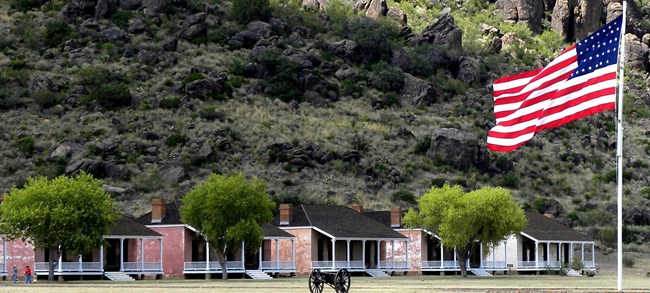
NPS
Fort Davis National Historic Site, Fort Davis, Texas
Established: September 8, 1961
A key post in the defense system of western Texas, Fort Davis played a major role in the history of the Southwest. From 1854 until 1891, troops stationed at the post protected emigrants, freighters, mail coaches, and travelers on the San Antonio-El Paso Road hoping to reach the gold fields of California. Today, Fort Davis is considered one of the best remaining examples of a frontier military post in the American Southwest. It is a vivid reminder of the significant role played by the military in the settlement and development of the western frontier. Named for Secretary of War Jefferson Davis, the fort was first garrisoned by Lieutenant Colonel Washington Seawell and six companies of the Eighth U.S. Infantry. The post was located in a box canyon near Limpia Creek on the eastern side of the Davis Mountains--where wood, water, and grass were plentiful. From 1854 to 1861, troops of the Eighth Infantry spent much of their time in the field pursuing Comanches, Kiowas, and Apaches.
With the outbreak of the Civil War and Texas's secession from the Union, the federal government evacuated Fort Davis. The fort was occupied by Confederate troops from the spring of 1861 until the summer of 1862, when Union forces again took possession. They quickly abandoned the post and Fort Davis lay deserted for the next five years. The original post consisted of primitive structures. (It was located west of the present day Officers' Row. The foundations of several buildings from this earlier fort can still be seen today.) Not many of the fort's structures remained in June 1867, when Lieutenant Colonel Wesley Merritt and four companies of the recently-organized Ninth U.S. Cavalry reoccupied Fort Davis. The building of a new post, just east of the original site, began immediately. By the end of 1869, a number of officers' quarters, two enlisted men's barracks, a guardhouse, temporary hospital, and storehouses had been erected. Construction continued through the 1880s. By then, Fort Davis had become a major installation with more than 100 structures, and quarters for more than 400 soldiers.
Fort Davis's primary role of safeguarding the west Texas frontier against the Comanches and Apaches continued until 1881. Although the Comanches were defeated in the mid-1870s, the Apaches continued to make travel on the San Antonio-El Paso road dangerous. Soldiers from the post regularly patrolled the road and provided protection for wagon trains and mail coaches. The last major military campaign involving troops from Fort Davis occurred in 1880. In a series of engagements, units from Fort Davis and other posts, under the command of Colonel Benjamin Grierson, forced the Apaches and their leader Victorio into Mexico. There, Victorio and most of his followers were killed by Mexican soldiers. With the end of the Indian Wars in west Texas, garrison life at Fort Davis became more routine. Soldiers occasionally escorted railroad survey parties, repaired roads and telegraph lines, and pursued bandits. In June 1891, as a result of the army's efforts to consolidate its frontier garrisons, Fort Davis was ordered abandoned, having "outlived its usefulness." Seventy years later, in 1961, the fort was authorized as a national historic site, a unit of the National Park Service.
~The above information was written by, and is credited to, staff at Fort Davis National Historic Site. Fort Davis National Historic Site (U.S. National Park Service) (nps.gov)
"I look forward to an America which will not be afraid of grace and beauty, which will protect the beauty of our natural environment, which will preserve the great old American houses and squares and parks of our national past, and which will build handsome and balanced cities for our future." -John F. Kennedy
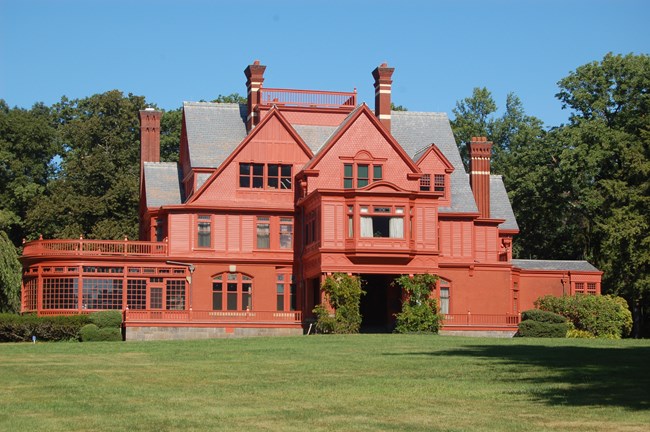
NPS
Thomas Edison National Historical Park, West Orange, New Jersey
Established: Edison Home, December 6, 1955Established: Edison Laboratory, July 14, 1956
Combined: September 5, 1962
Thomas A. Edison embodied the spirit of invention that gripped America in the late nineteenth century. Born in Milan, Ohio, in 1847, he worked as an itinerant telegrapher in the 1860s and eventually settled in Boston, where he worked on improving telegraph equipment for several companies. He later moved to New York City and set up a series of workshops with a changing set of partners. His last shop was in Newark, New Jersey. On Christmas of 1871 he married Mary Stilwell, one of his office workers.
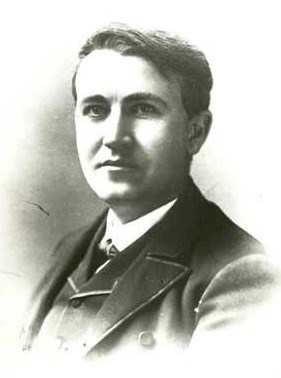
NPS
In 1876 he built a laboratory and workshop in Menlo Park, New Jersey, about twelve miles from Newark. A team of “muckers,” skilled assistants, joined him there. At Menlo Park he invented the phonograph (which made him instantly famous) and a practical incandescent lamp and the electrical distribution system needed to power it. He moved back to New York to supervise the installation of electric power stations.
After his wife died in 1884, Edison was a widower with three children. In 1886 he married Mina Miller, the daughter of an inventor and manufacturer from Akron, Ohio. According to family lore, Edison gave his fiancée the choice of a townhouse in New York City or the estate in Llewellyn Park. The house, built in 1880, was in the simple Queen Anne style, but the interior was furnished in the Victorian style, reflecting the opulent taste of the day. A few blocks from the Llewellyn Park gates, Edison built his new laboratory, ten times the size of the Menlo Park facility.
The West Orange complex set the standard for industrial research laboratories. The main building housed a library for research, machine shops for building models, and experimental rooms to house diverse research projects. Separate buildings for chemistry, physics, and metallurgy stood nearby. Edison was the guiding force behind every project, but teams were free to work independently and muckers moved from one project to another. Edison walked through the shops and experimental rooms to check workers’ progress and offer suggestions. He often stayed at work long into the night, catching quick naps on a cot in his library, even though Glenmont was only a half-mile away.
Glenmont became very much Mina’s domain. Aided by a large staff, she managed the household and raised the couple’s three children, Madeleine, Charles, and Theodore, as well as her stepchildren, Marion, Thomas Jr., and William. She ably fulfilled her role as the wife of a famous man, holding dinners for her husband’s business associates and participating in local society. Guests included Orville Wright, Helen Keller, the King of Siam, and Edison’s friend Henry Ford. After Edison died in 1931, Mina married again and lived at Glenmont until her death in 1947. Both Edisons are buried on the grounds.
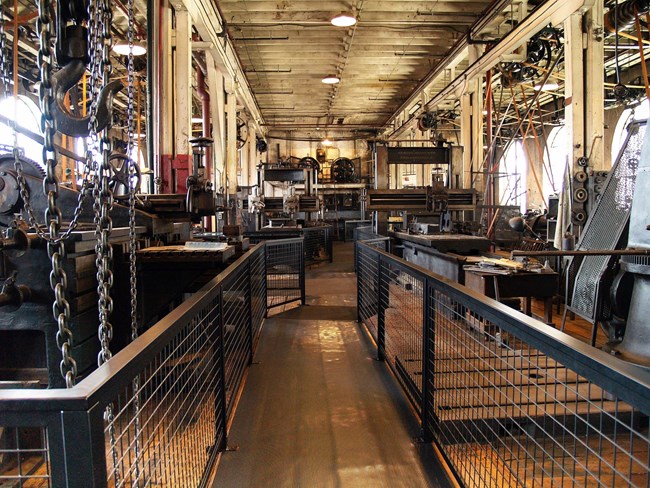
NPS
The cornerstone of Edison’s business was an extensive phonograph operation. In addition, he introduced motion pictures, and manufactured cameras, projectors, and films. Together the phonograph and film businesses met the demands of a public eager for these new forms of popular entertainment.
Edison produced a workable nickel-iron alkaline battery that became the standard for mining, railroad, marine, and military applications. Other inventions included a method of building poured concrete buildings; a fluoroscope to view x-ray images; new methods for manufacturing chemicals in large quantities; huge machines for extracting iron from ore and for manufacturing cement. Edison’s final experimental campaign was a search for a domestic source of rubber. Perhaps his greatest invention, however, was the research and development laboratory that was tied closely to a diversified business.
Business slumped in the 1920s, and only storage batteries and dictation phonographs stayed in production throughout the decade (They persisted, in fact, into the 1960s.) The West Orange lab gradually closed down after Edison’s death and reopened as a museum in 1948 under the auspices of the Thomas A. Edison Foundation. Eventually, the Foundation, the Edison family, and Thomas A. Edison, Inc. (later the McGraw-Edison Company) began conveying the site to the National Park Service.
Glenmont was designated Edison Home National Historic Site on December 6, 1955, and the laboratory as Edison Laboratory National Monument on July 14, 1956. The two areas were combined as Edison National Historic Site September 5, 1962, and as Thomas Edison National Historical Park by the Omnibus Public Land Act of 2009 (Public Law 111-11).
~The above information was written by, and is credited to, staff at Thomas Edison National Historical Park. Thomas Edison National Historical Park (U.S. National Park Service) (nps.gov)
"In the usual progress of things, the necessities of a nation in every stage of its existence will be found at least equal to its resources." -Alexander Hamilton
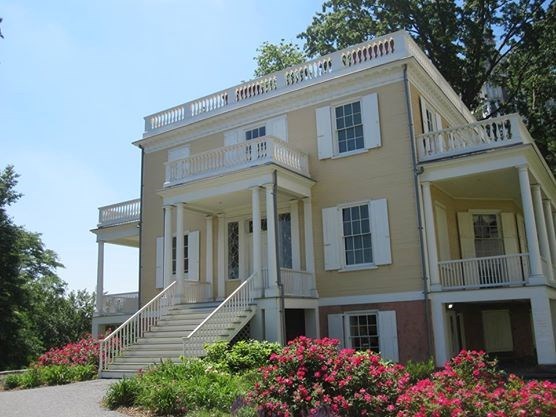
NPS
Hamilton Grange National Memorial, New York, NY
Established: April 27, 1962
Hamilton Grange National Memorial preserves the home of founding father Alexander Hamilton. Born and raised in the West Indies, Hamilton was orphaned in his early teens. Taken in as an apprentice to an international shipping company based on his home island, his talents were recognized by local benefactors who created a fund to provide him with a formal education. Hamilton came to New York in 1772 at age 17 to study at King's College (now Columbia University.)
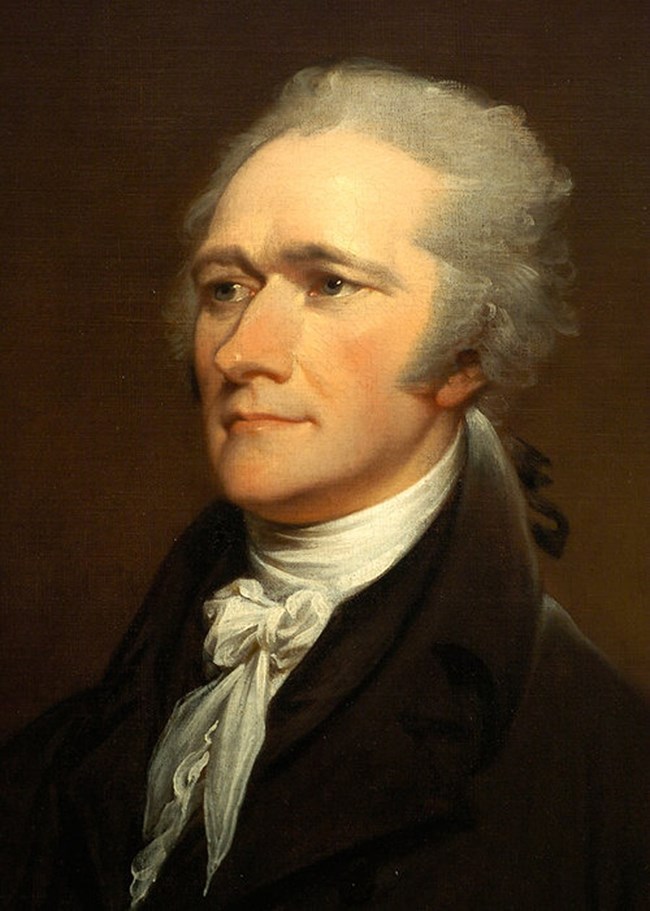
National Portrait Gallery, Smithsonian Institution; Gift of Henry Cabot Lodge.
During this period, he was exposed to American Patriots and became a supporter of their cause. As a student, he wrote defenses of the revolutionary cause and published in local newspapers. Soon thereafter, Hamilton was commissioned as a Captain of Artillery at the beginning of the Revolutionary War; and later his abilities were again recognized and he was invited to become an aide-de-camp to General George Washington.
After the war, as a member of Congress, Hamilton was instrumental in creating the new Constitution. As co-author of the Federalist Papers, he was indispensable in the effort to get the Constitution adopted. As the first Secretary of the Treasury (1789-95,) he devised plans for funding the national debt, securing federal credit, encouraging expansion of manufacturing, and organizing the federal bank. As an integral member of Washington's cabinet, he developed the concept of "implied powers," which allowed the federal government to do things in support of the Constitution, that were not specifically spelled out in it.
Hamilton commissioned architect John McComb Jr. to design a Federal-style country home on a 32-acre estate in upper Manhattan. This house was completed in 1802 and named "The Grange" after his father's ancestral home in Scotland.
Unfortunately, Hamilton was only able to enjoy his home for two years. On July 11, 1804, Hamilton was fatally wounded in a duel with his personal and political rival Vice President Aaron Burr.
~The above information was written by, and is credited to, staff at Hamilton Grange National Memorial. Hamilton Grange National Memorial (U.S. National Park Service) (nps.gov)
"We do not inherit Earth from our ancestors; we borrow it from our children."
-Native American Proverb
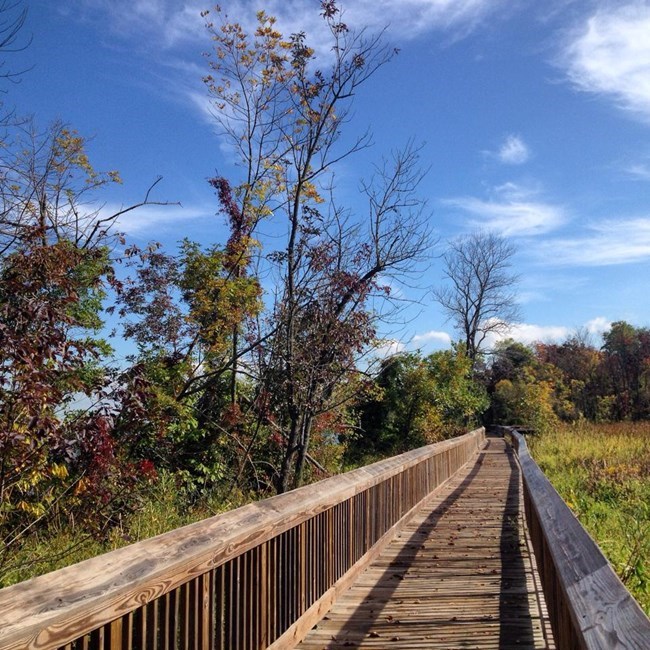
NPS/Zachary Whitlow
Piscataway Park, Accokeek, Maryland
Established: October 4, 1961
The land and waterways now known as Piscataway Park have been the tribal homeland of the Piscataway People for longer than records have been kept. Today it remains the cherished homeland of the Piscataway People of Southern Maryland.
The Piscataway homeland was first mapped by Captain John Smith in 1608. The Piscatway chiefdom encompassed most of what is now Southern Maryland, including under the Piscataway umbrella semi-independent nations ranging from Yeocomico near the mouth of the Potomac River to the Tauxenents near modern-day Washington, D.C. By the 14th century, the Piscataways were governed by a hereditary chief, or Tayac, who collected and redistributed tribute, mediated between humans and the spiritual world, and coordinated war and diplomacy.
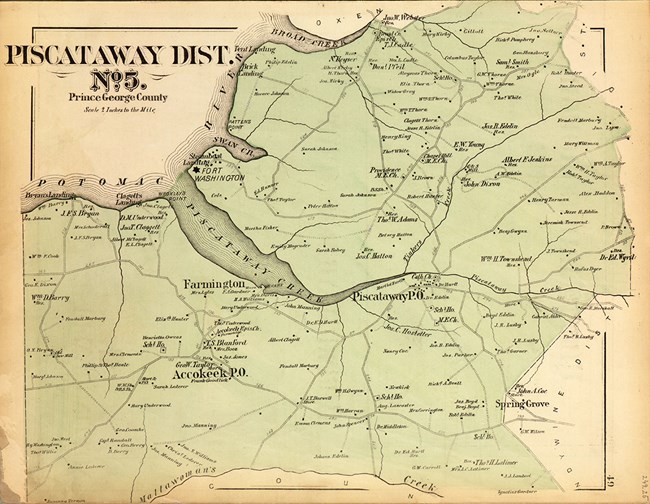
Library of Congress
For Piscataways, this land is the burying place of countless ancestors, the place where the fundamentals of Piscataway society and culture were forged. It is the location of Moyaone, a substantial town that was the political center of the Piscataway chiefdom.
The Piscataway people are alive and well. Like other modern Americans, many Piscataways have moved to far-flung places, but the heaviest concentration is in Charles, Prince George's, and St. Mary's counties, particularly in La Plata and Brandywine.
The Piscataway community has been growing in size since the 19th century. It is tied together by a common culture, by neighborhood connections in Southern Maryland, through lines of kinship extending to all Piscataway people, and by several tribal organizations.
Above all, today's Piscataways have in common their homeland, which centers on Piscataway Park.
Piscataway Park offers many opportunities for exploration and recreation and is located on the Atlantic Flyway, a migration route used by millions of birds each year. The habitat protected by Piscataway Park provides birders a great opportunity to see many types of birds.
~The above information was written by, and is credited to, staff at Accokeek Foundation and Piscataway Park. Piscataway Park | Accokeek Foundation | Maryland and Piscataway Park (U.S. National Park Service) (nps.gov)
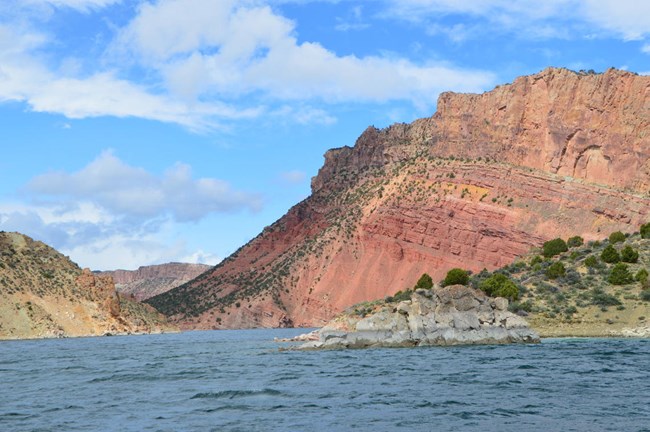
Barth, Robert, USGS NGTOC. Public domain.
Flaming Gorge National Recreation Area, Vernal, Utah/McKinnon, Wyoming
Established: August 7, 1961Transferred to the U.S. Forest Service: October 1, 1968
Flaming Gorge National Recreation area was originally administered by the National Park Service. It was transferred to the U.S. Forest Service in 1968 and incorporated into the Ashley National Forest.
The Ashley National Forest, with headquarters in Vernal, Utah, comprises 1.3 million acres located in the northeastern portion of Utah and southwestern portion of Wyoming. National Forest System lands are located in three major areas: the northern and southern slopes of the Uinta Mountains, the Wyoming Basin, and the Tavaputs Plateau.
The Ashley National Forest is bordered by the Uintah and Ouray Ute Indian Reservation, the Uinta and Wasatch-Cache National Forests, private property, and lands administered by the Bureau of Land Management and State of Utah. Dinosaur National Monument is located approximately ten miles east of the Forest.
The Ashley National Forest was established by President Theodore Roosevelt in 1908. Its forest and range lands are protected and managed to ensure timber, grazing, minerals, water, and outdoor recreation for the American people.
The vast Uinta Mountains watershed within the Forest boundary provides vital water supplies for power, industry, farm, and city use in Utah, Nevada, Wyoming, and California. Sheep, cattle, and horses graze under permit on over a half million acres of the Forest each season. Timber is managed in harmony with other resources to ensure a continuing supply and a quality environment. Over 2.5 million visitors come to the Forest each year to participate in outstanding outdoor recreation activities, such as boating, fishing, camping, hiking, backpacking, horseback riding, cross-country skiing, and snowmobiling.
Forest landscape ranges from high desert country to high mountain areas. The elevation varies from a low of 6,000 feet to a high of 13,528 feet above sea level at the summit of Kings Peak.
Topographical diversity and intensive land management has served to protect the visual quality on the Forest. The existing vegetation patterns and the geological formations further add to the aesthetic value. The Forest boundaries include places such as the Sheep Creek Geological Area, the High Uinta Wilderness area, the Green River, and the Flaming Gorge National Recreation Area.
~The above information was written by, and is credited to, staff at Flaming Gorge National Recreation Area. Ashley National Forest - Special Places (usda.gov)
"Buck Island and its adjoining shoals, rocks, and undersea coral reef formations possess one of the finest marine gardens in the Caribbean Sea." -John F. Kennedy
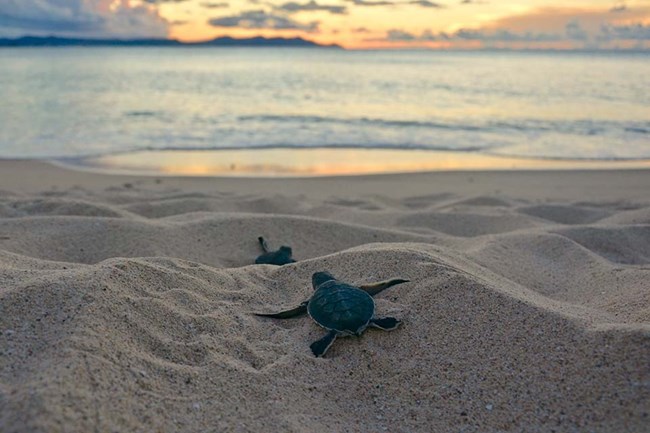
NPS
Buck Island Reef National Monument, Christiansted, St. Croix, Virgin Islands
Established: December 28, 1961When you think of visiting “America’s Paradise,” what comes to mind? Sparkling clear waters? Coral reefs? Palm trees swaying the breeze? History? All of these and more can be found in Buck Island Reef National Monument in the US Virgin Islands.
Buck Island is a small uninhabited island located 1 ½ miles north of the island of St. Croix. While there are numerous islands of similar size and appearance in the Lesser Antilles, a group of islands in the Caribbean Sea, Buck Island has a distinctive feature that sets it apart—a magnificent elkhorn coral barrier reef. The exceptional and unique quality of this bank-barrier reef and its lagoon are noted throughout the Caribbean and has long been recognized. The Government of the Virgin Islands took control of Buck Island in 1936 and established the island and its coral reefs as a protected territorial park in 1948.
Documentation by a young marine biologist, Dr. John Randall from the University of Miami, was influential in establishing Buck Island Reef National Monument as a part of the National Park System by presidential proclamation on December 5, 1961. The monument was created to recognize the area’s outstanding scientific, aesthetic, and educational importance and protect the island and the “adjoining shoals, rocks, and undersea coral reef formations” that compose “one of the finest marine gardens in the Caribbean Sea.”
For more than 50 years, the National Park Service has monitored the monument’s marine and terrestrial ecosystems and conducted and supported scientific research. Buck Island has one of the world’s most important beaches for nesting hawksbill sea turtles and also provides safe nesting for local and migratory species of birds, including brown pelicans and least terns. The elkhorn coral barrier reef that surrounds two-thirds of the island has survived hurricanes and diseases and maintains its dramatic coral formations, deep grottoes, diverse reef fishes, sea fans, and soft corals (or gorgonians.)
Efforts have been made to reestablish native flora and fauna, including rare plants and animals native to St. Croix. The island’s coral sand beaches and tropical dry forests along shoreline host year-round sea turtle nesting. For more than 30 years, Buck Island’s Sea Turtle Research Program has studied endangered hawksbill and leatherback turtles and threatened green and loggerhead turtles that nest and forage within the monument.
Another one of the park’s success stories is the translocation of the endangered St. Croix ground lizard. In 2007, the National Park Service and federal and territorial partners moved 57 adult St. Croix ground lizards from Green Cay National Wildlife Refuge to Buck Island. The project’s success was largely due to the park’s efforts over the previous 20 years to remove nonnative predatory animals, like rats and mongoose, and exotic plants from Buck Island, providing a safe habit for the little lizards to thrive. Today there are more than 10,000 lizards on the island. If you are quiet, you may hear them move in the dried leaves or see their bright blue tails and bright pink faces.
Buck Island has been used by both prehistoric and historic peoples for its rich variety of marine fauna and terrestrial flora. People have come to Buck Island to enjoy the island’s beaches, waters, fish, and other wildlife for at least 2,000 years. In 1789, the Danish government built a signal station on the highest point of Buck Island. This station alerted the guards stationed at Fort Christiansvaern in Christiansted of arriving ships by raising a flag. Enslaved Africans from St. Croix were sent to Buck Island to harvest lignum vitae or ironwood trees, gather shellfish and lobsters, and tend goats that were released on the island to free range and forage.
Ships destined for the harbor at Christiansted or leaving for other ports had to navigate around Buck Island’s vase and shallow coral reefs and occasionally wrecked on them. In 2015, archeologists from the National Park Service’s Submerged Resources Center, and Southeast Archeological Center, in collaboration with the Smithsonian Institution’s National Museum of African American History and Culture and George Washington University, began locating and documenting archeological sites both above and under water associated with the historic trade of enslaved Africans. The team undertook a survey and inventory of the island’s submerged resources to look for two slave ships, the Mary and the General Abercrombie, that wrecked off its reefs in addition to any other archeological sites under the park’s waves. This survey was part of the park’s ongoing partnership with the Slave Wrecks Project, an international network of researchers and institutions that combines collaborative maritime exploration and investigation with training, heritage protection, exhibits, and education to build and share new knowledge about the history of the global slave trade.
So, whether you decide to come visit America’s paradise on your next vacation or business trip, be sure to find your way to Buck Island. If you prefer to snorkel or SCUBA dive through one of the Caribbean’s finest intact coral reefs, hike the trail over the island to the observation platform for a view of the reef and the Virgin Islands to the north, or simply lounge and sunbathe on the coral sand beaches and relax in turquoise of tropical waters, Buck Island Reef National Monument will not disappoint.
~The above information was written by, and is credited to, staff at Buck Island Reef National Monument. Buck Island Reef National Monument (U.S. National Park Service) (nps.gov)
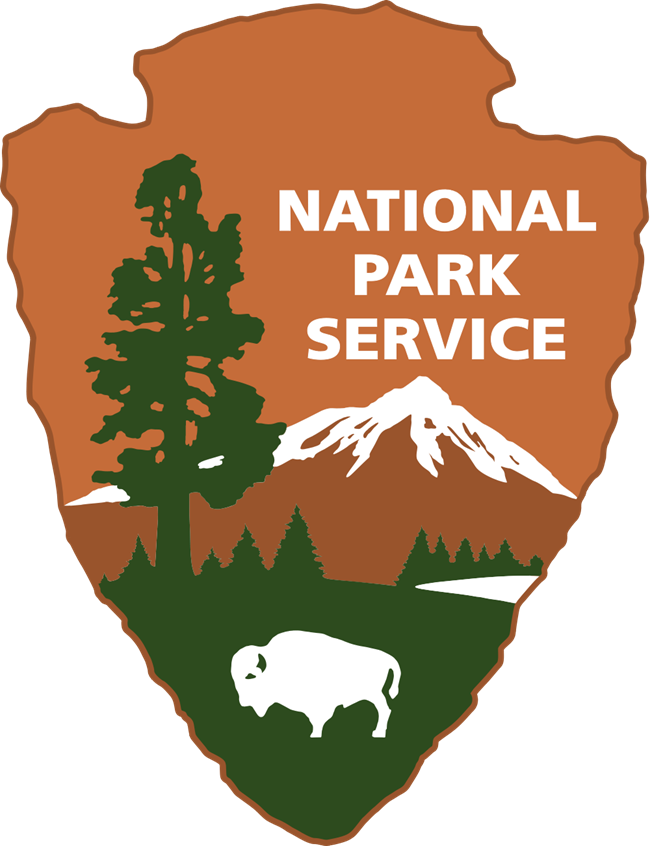
NPS
These sites include national parks, monuments, battlefields, military parks, historical parks, historic sites, lakeshores, seashores, recreation areas, scenic rivers and trails, and the White House.
The mission of the National Park Service is to preserve the natural and cultural resources and values for the enjoyment, education, and inspiration of this and future generations.
